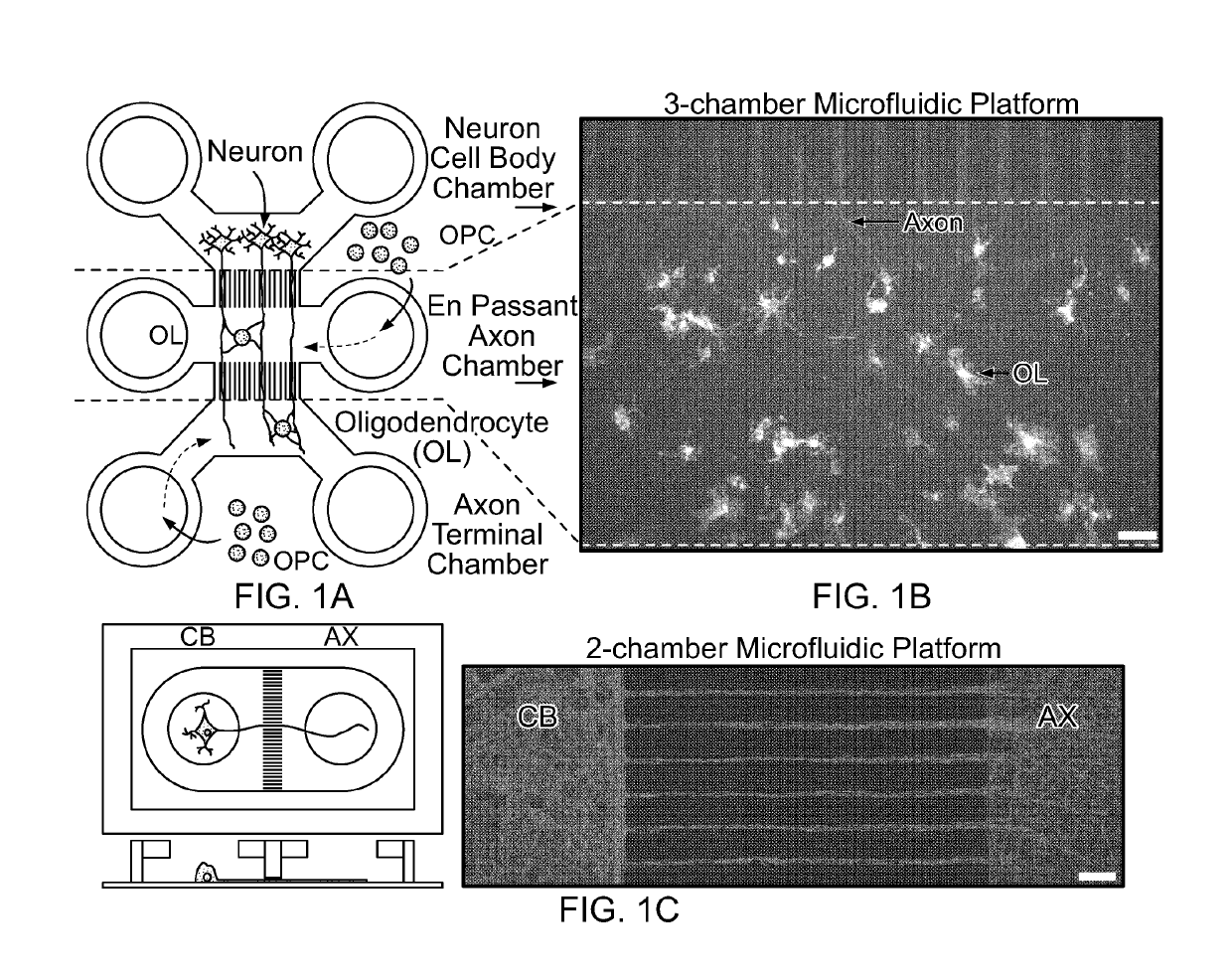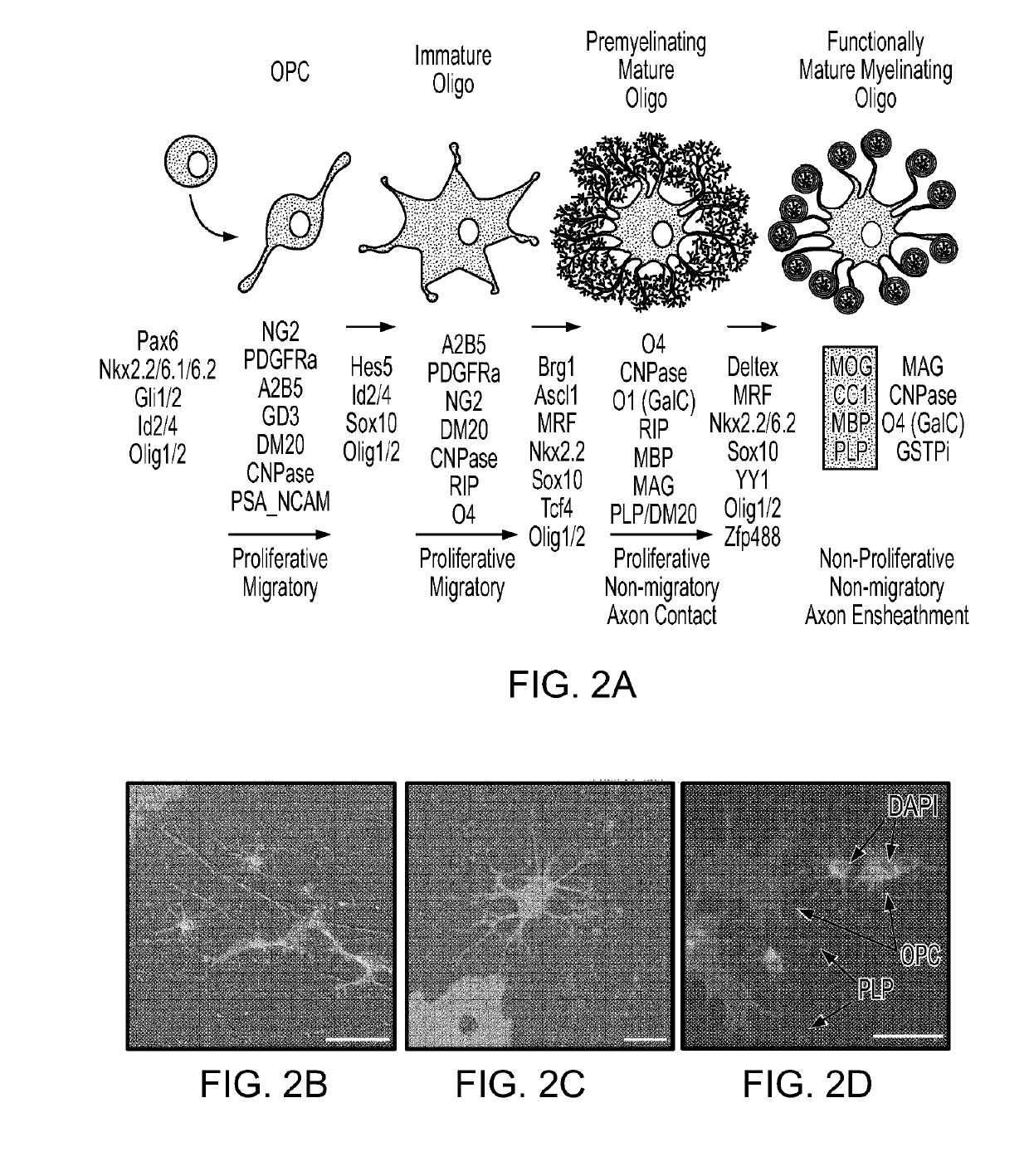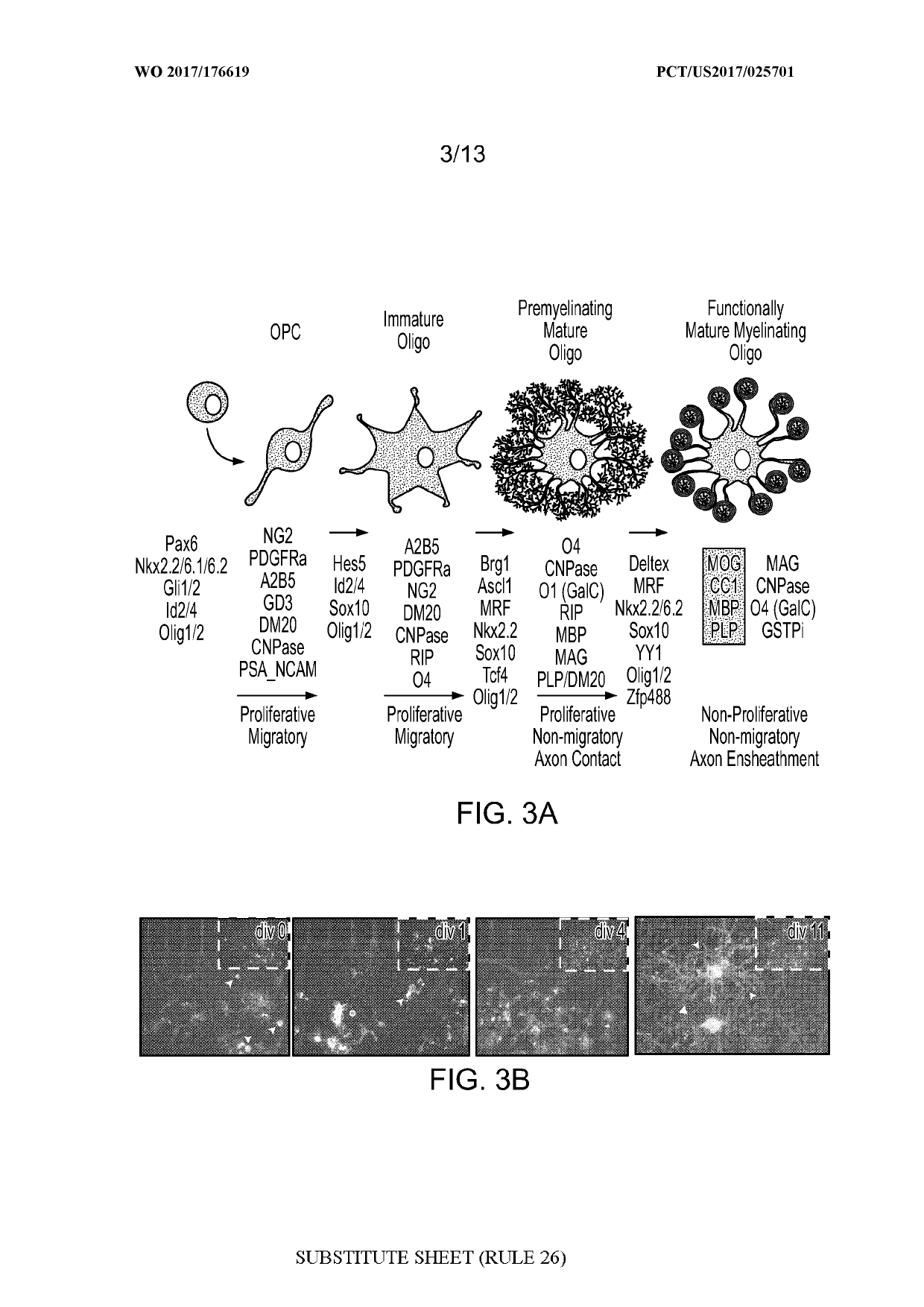Treating optic neuritis with induced pluripotent stem cell-derived oligodendrocyte precursor cells
a technology of oligodendrocyte precursor cells and optic neuritis, which is applied in the field of treating optic neuritis with induced pluripotent stem cell-derived oligodendrocyte precursor cells, can solve the problems of reduced contrast sensitivity, persistent visual impairment of a third of affected eyes, and poor visual function of patients without a clinical history of optic neuritis, so as to improve the maturation or myelination efficiency
- Summary
- Abstract
- Description
- Claims
- Application Information
AI Technical Summary
Benefits of technology
Problems solved by technology
Method used
Image
Examples
example 1 — experimental procedures
Example 1—Experimental Procedures
Preparation of Microfluidic Chambers
[0053]MFCs were prepared as described elsewhere (Sauer et al., Neurobiol. Dis., 59:194-205 (2013)). Briefly, silicone elastomer (Sylgard 184) base and curing agent (mixed 10:1) were poured over etched fused silica molds. MFCs were placed in a vacuum chamber and incubated at 37° C. before being cut out from the molds and sterilized for use. In a sterile hood, acid washed and sterile coverslips (22×22 mm) were placed in 6-well tissue culture plates and coated with 0.5 mg / mL poly-ornithine overnight at 37° C. Prior to plating cells, the printed surface of the sterilized MFCs was adhered to glass cover slips to achieve a leak-proof chamber.
Primary Cortical Neurons Grown in MFCs
[0054]Primary murine cortical neuron cultures were prepared as described elsewhere (Sauer et al., Neurobiol. Dis., 59:194-205 (2013)). Briefly, cells were obtained from embryonic day 15 B6 mouse cortices and plated at 1.5×105 cells per microfluid...
example 2
dic Chamber Design
[0064]Murine cortical neurons were successful cultured in microfluidic chambers in order to isolate the neuronal cell bodies from their axons. Microgrooves within a microfluidic device prevented cell bodies from entering the axonal chamber, thereby allowing easier visualization and manipulation of axons without the interference of neuronal cell bodies and other cells types (such as oligodendrocytes and astrocytes) that are present at plating (FIG. 1C). A three-chamber microfluidic device was designed that not only allowed the separation of neuronal cell bodies and axons but permitted the addition of OPCs to a middle chamber that provided en passant access to the axons while minimizing fluidic shear stress (FIGS. 1A and 1B), thus allowing for easier quantification of in vitro myelination. The design shown in FIGS. 1A and 1B also permits the use of different combinations of growth and differentiation factors in order to optimize survival and maturation of OPCs and ol...
example 3
Differentiation Protocol for Generating OPCs from Induced Pluripotent Stem Cells
[0065]Cell populations enriched for OPCs were created from murine lines as described elsewhere (Terzic et al., Cell Transplantation, 25(2):411-424 (2016)).
PUM
 Login to View More
Login to View More Abstract
Description
Claims
Application Information
 Login to View More
Login to View More - R&D
- Intellectual Property
- Life Sciences
- Materials
- Tech Scout
- Unparalleled Data Quality
- Higher Quality Content
- 60% Fewer Hallucinations
Browse by: Latest US Patents, China's latest patents, Technical Efficacy Thesaurus, Application Domain, Technology Topic, Popular Technical Reports.
© 2025 PatSnap. All rights reserved.Legal|Privacy policy|Modern Slavery Act Transparency Statement|Sitemap|About US| Contact US: help@patsnap.com



